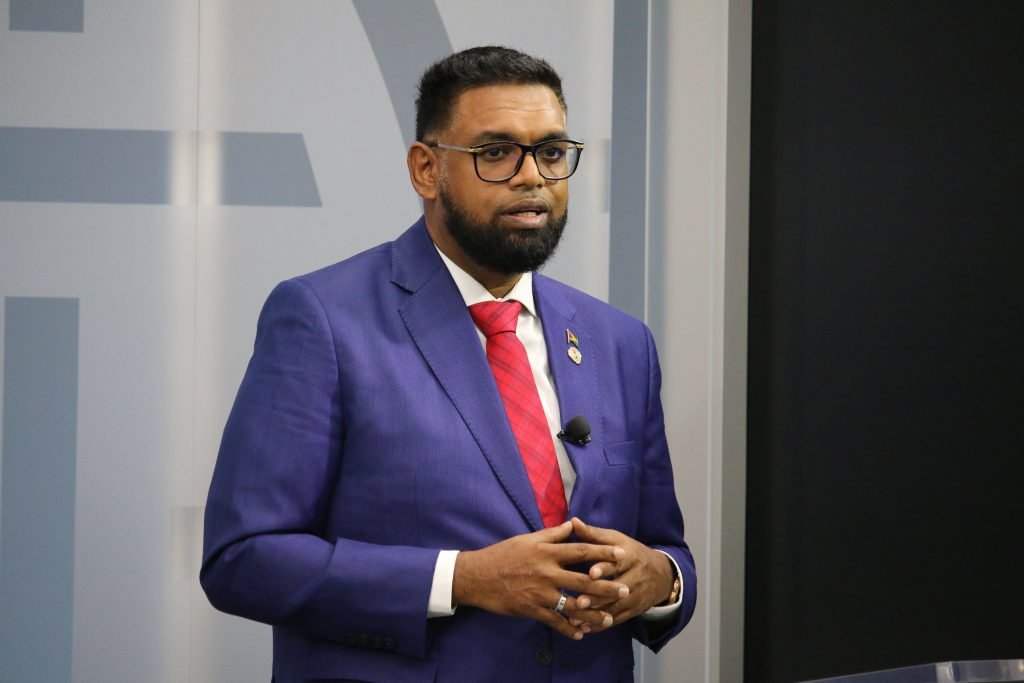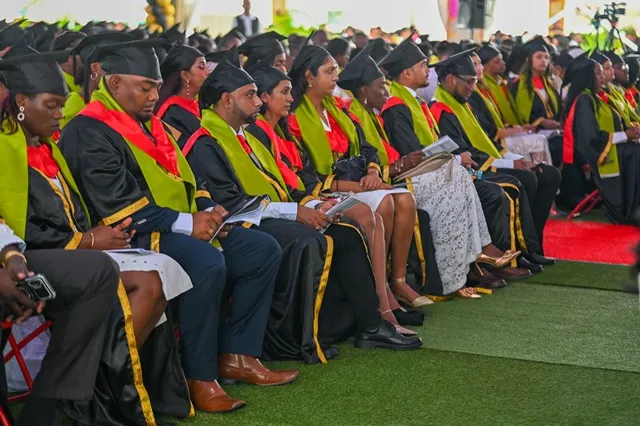Introduction
Guyana’s economic boom has brought new opportunities – but it has also cast a spotlight on the country’s public security challenges. Crime, from violent offenses to narcotics trafficking, remains a pressing concern for many Guyanese. Yet recent data suggests a nuanced picture: even as some crime rates have spiked in past years, there have been notable improvements in others due to focused interventions. In this article, we take a deep dive into crime trends in Guyana and explore what is being done to curb them. We examine statistical trends in major crimes like homicide and robbery, analyze underlying factors (such as narco-trafficking routes and socio-economic shifts), and discuss the strategies authorities and communities are employing to create a safer Guyana. With the nation’s rapid development, ensuring public safety is crucial to sustaining confidence and quality of life. Are current efforts working, and what more can be done? We gather perspectives on the way forward in building a more secure society for all Guyanese.
Crime by the Numbers: Mixed Trends
Official statistics in recent years paint a complex picture. Guyana has historically struggled with a high murder rate relative to population, often ranking among the higher rates in the Caribbean. In 2023, the homicide rate was approximately 19.2 per 100,000 people americasquarterly.org – to put in context, that’s about four times the global average. This represented about 78 murders in 2023, a rise from the previous year. In fact, the Ministry of Home Affairs reported a 21% increase in murders in 2023 compared to 2022 (a worrying jump noted in local media) .
 However, a dramatic shift occurred in 2024. According to InSight Crime’s analysis, Guyana’s homicide rate dropped by 13% in 2024 to reach a record low of 14.1 per 100,000. Total murders fell to 117 for the year, marking the lowest level in decades. This improvement broke an earlier upward trend and is a positive signal that interventions may be working. For comparison, a rate of 14.1 puts Guyana below several Caribbean neighbors and is the lowest it has seen in modern tracking history.
However, a dramatic shift occurred in 2024. According to InSight Crime’s analysis, Guyana’s homicide rate dropped by 13% in 2024 to reach a record low of 14.1 per 100,000. Total murders fell to 117 for the year, marking the lowest level in decades. This improvement broke an earlier upward trend and is a positive signal that interventions may be working. For comparison, a rate of 14.1 puts Guyana below several Caribbean neighbors and is the lowest it has seen in modern tracking history.
Other crime categories show similarly encouraging signs. Robberies in 2024 declined significantly – the country recorded the fewest number of robberies in 10 years. Police also seized a record number of illegal firearms and secured more drug trafficking prosecutions than ever before. These outcomes suggest a tightening grip on crime in some areas. Officials attribute these gains to targeted strategies (discussed below), though it’s important to remain vigilant to prevent any resurgence.
On the flip side, not all forms of crime are down. Gun-related incidents and armed robberies, while fewer in 2024, are still a concern especially in urban centers. Narco-trafficking through Guyana’s porous borders continues to pose a threat – the country’s geography (dense jungle and river networks) has long made it a transit point for cocaine from South America. Additionally, domestic violence and sexual violence cases have unfortunately remained high, a societal scourge that doesn’t always grab headlines but affects many families. Crime is also not evenly distributed: some interior regions experience episodic violent flare-ups tied to mining disputes or banditry, whereas the capital region sees more gang-related youth crime.
Root Causes and New Pressures
Understanding Guyana’s crime situation requires examining its root causes. Poverty and unemployment have historically fed criminality – marginalized young men in urban neighborhoods like parts of Georgetown and Linden sometimes turn to gang activity or petty crime. The drug trade also recruited individuals due to lack of other opportunities. As Guyana’s economy expands, one hope is that better jobs and education will naturally reduce these drivers. Indeed, government officials often link economic development to future crime reduction. But in the near term, rapid growth can paradoxically introduce new crime pressures: sudden wealth can spur theft, an influx of foreign workers can fuel illicit markets (prostitution, drugs), and inequality can breed resentment.
One clear example is the narco-trafficking pipeline. Guyana’s maritime spaces and remote airstrips have been exploited by international cocaine networks. The USA has flagged increases in drug movements through Guyana, although local enforcement – with US collaboration – has scored some big busts in recent years. The government established a Special Organized Crime Unit (SOCU) to tackle money laundering and organized crime, and cooperation with neighboring Brazil and Suriname has improved cross-border surveillance. Still, the drug trade remains a major underpinning of criminal enterprise, from money laundering in business to violent turf protection.
Another contributor is the availability of firearms. Many illegal guns flow in from Brazil or Venezuela, arming criminals. The authorities’ record firearms seizures in 2024 (the most guns seized ever in a year) highlight the effort to get weapons off the streets. Over 120 firearms were taken in police operations that year, ranging from pistols to high-powered rifles, according to police statistics. This removal of guns likely played a part in the drop in gun crimes.
Social issues also play a role. Guyana’s Police Commissioner noted that interpersonal violence, often linked to alcohol or domestic disputes, accounts for a large share of homicides. For instance, a number of 2023’s murders were cases of domestic violence or bar fights that turned deadly. Tackling this means addressing social norms and providing better conflict resolution and support systems – a longer-term challenge.
Policing and Justice Reforms
In response to crime challenges, Guyana’s government and security forces have implemented a suite of measures. The PPP/C government, since taking office in August 2020, has prioritized modernizing the Guyana Police Force (GPF). One headline initiative is the establishment of Regional Joint Support Teams and Command Centers. By 2024, the government set up high-tech Command Centers in crime-prone regions which integrate CCTV feeds, emergency response units, and rapid deployment teams. These centers enable real-time monitoring and quicker dispatch when incidents occur. The Minister of Home Affairs credited this “strategic intervention and use of advanced technology” for helping cut crime in 2024.
The police have also been benefiting from better resources. In 2023–2024, the GPF received new patrol vehicles, communications equipment, and forensic tools financed by the state budget (buoyed by oil revenues). More than 50 new vehicles and 180 motorcycles were added to the fleet countrywide, improving police presence in both urban and rural areas. Specialized training has been ramped up as well, sometimes in collaboration with international partners (e.g. anti-gang training with the FBI, forensic training with the UK). The result, as officials claim, is a more proactive and professional police service. In 2024, over 70% of murder cases were solved with suspects arrested and prosecuted – an exceptionally high clear-up rate by international standards. This is significant because high solve rates act as a deterrent; criminals know they are likely to be caught.
Legislative actions complement police efforts. The government in 2022 passed tougher anti-gun legislation, raising penalties for smuggling and possession of illegal firearms. There’s also a focus on judicial reform to speed up trials and reduce the backlog of cases. Guyana’s courts historically suffered delays, which eroded confidence. Now, new criminal procedure rules and night courts for magistrate-level offenses have started to move cases faster. As a result, conviction rates for armed robbery and trafficking have improved.
Community policing is another prong. Nearly every region now has active Community Policing Groups (CPGs) – volunteers who work with police to patrol neighborhoods and mediate disputes. There are over 200 CPGs nationally, including in hinterland villages. The idea is to foster police-community trust and gather local intelligence. In some high-crime wards of Georgetown, these groups have been credited with preventing youth gang recruitment by organizing sports and after-school activities. The “Faith and Police” initiative also partners religious organizations with law enforcement to tackle issues like domestic violence at the community level.
Notable Successes
The concerted efforts seem to be yielding some success stories. The stark improvement in 2024, where Guyana achieved its lowest homicide rate on record, is one such headline. Officials proudly pointed out that Guyana went from 20 murders per 100,000 people a few years ago down to 14.1 in 2024, bucking regional trends where many countries saw rising violence. Insight Crime’s annual report even highlighted Guyana as a positive outlier in the region for that year.
Another success has been the reduction in piracy attacks against fishermen. In the mid-2010s, pirate attacks off Guyana’s coast and rivers were a brutal issue (infamously, a 2018 incident saw over a dozen fishermen murdered by pirates). Through joint Coast Guard and Police Marine Unit patrols, as well as cooperation with Suriname, such incidents have dramatically declined. 2022 and 2023 had zero reported deadly piracy incidents in Guyanese waters, a relief for coastal communities.
Narcotics interdiction has also improved. In 2022, authorities intercepted a record 11.5 tons of cocaine and arrested multiple high-profile traffickers (some in joint ops with regional agencies). While drugs continue to move, these busts disrupt networks and signal that Guyana is not a soft route. The establishment of a Drug Enforcement Command Center in 2023, integrating Customs, Police Narcotics Branch, and international liaison officers, has enhanced coordination. Guyana’s inclusion in the US-sponsored “Caribbean Basin Security Initiative” provides funding and intel-sharing that bolster these efforts.
Finally, the community engagement approach has shown impact in local crime reduction. For example, the Charlestown neighborhood in Georgetown saw crime reports drop by 30% after a community policing pilot project launched in 2021, which increased foot patrols and youth outreach (police formed a youth group teaching job skills). Residents there report feeling safer and more willing to cooperate with law enforcement. Such localized improvements, replicated elsewhere, contribute to the national downward trend.
Lingering and Emerging Challenges
Despite gains, Guyana faces lingering security challenges. Domestic violence remains at crisis levels – in 2022, over 2,000 cases of domestic abuse were reported, and likely many more went unreported. Several heinous femicides have occurred, sparking public outcry. The government has toughened laws (the 2022 Domestic Violence Act increased protections) and opened shelters, but changing cultural attitudes is a longer battle. The First Lady Arya Ali has been vocal with public campaigns against domestic violence, indicating the administration’s recognition that safety begins in the home.
Youth crime and gang activity, while perhaps tempered by better employment prospects lately, could resurge if inequality persists. Not all young people will land oil industry jobs; ensuring they have pathways through vocational training or small business support is key. The Education Ministry’s roll-out of technical institutes in every region and the creation of a $2 billion Small Business Fund aim to address this socioeconomic root.
One emerging issue is cyber and white-collar crime. With more money flowing and more people online, scams and fraud have increased. The police have reported an uptick in pyramid scheme frauds and ATM scams targeting people receiving newfound cash. Additionally, illegal mining (“galamsey”) in the interior has law-and-order implications, often involving armed groups and environmental crimes. The administration in 2023 launched a special unit to crack down on illicit mining and timber trafficking, which fuel crime in Regions 7, 8, and 9. InSight Crime’s report flagged illegal mining and timber trafficking as notable criminal dynamics in Guyana’s interior. These require enforcement as well as giving alternative livelihoods to those involved.
Finally, an overarching challenge is public trust in the security forces. While efforts are underway to professionalize the police, there have been past incidents of rogue cops or alleged abuses that strain community relations. Maintaining a transparent disciplinary system for law enforcement and showing that even officers are accountable under the law is vital. The government has reopened inquiries into some historical extrajudicial killings and set up a Police Complaints Authority to investigate misconduct. Gradually, these steps can build confidence that the rule of law applies evenly.
Strategies for a Safer Tomorrow
Moving forward, Guyana is doubling down on a holistic approach to crime fighting. The 2025 national budget reflects this, with increased allocations for security: money for 500 new police recruits, new forensic labs, and prison reform. Prison reform in particular is crucial, since overcrowded, substandard jails can be breeding grounds for hardened criminals. A new modern prison facility is under construction to replace the fire-destroyed Georgetown Prison, aiming to emphasize rehabilitation. The government is also working on reintegration programs for ex-inmates (job training in prison, halfway homes), to reduce recidivism.
International cooperation will remain a cornerstone. Guyana is part of the CARICOM Crime and Security Strategy, meaning it works with neighbors on intelligence sharing, joint patrols, and harmonizing legal frameworks. Being on the UN Security Council in 2024-25, President Ali has even raised the issue of the link between climate change, food insecurity, and conflict, advocating globally for supportive measures atlantic. This broader view recognizes that security is not just policing – it’s also about stability and resilience in the face of wider threats (for example, a climate disaster that displaces people can drive crime spikes).
Empowering communities is another key strategy. The government has indicated plans to expand the Safe Country Initiative, which involves installing CCTV cameras in all major towns (some funded via public-private partnership) and creating neighborhood watch app networks. Citizens will be able to report crimes in real time via a hotline and mobile app anonymously, encouraging more reporting and quicker response. Education campaigns, such as those on conflict resolution and the dangers of drug abuse, are being taken into schools as preventative measures.
In summary, Guyana’s trajectory on crime is cautiously hopeful. After years of high violence, the country is seeing meaningful improvement – homicides down, robberies down, and more criminals brought to justice. The government’s multi-faceted strategy of beefing up law enforcement, leveraging technology, investing in social programs, and engaging citizens seems to be bearing fruit. Yet there is no room for complacency. As Guyana continues its rapid change, new security challenges will emerge and old ones will need constant attention. The true measure of success will be a sustained low crime rate and a populace that feels secure in daily life, from the smallest village to the busiest city street. With strong political will and community partnership, the goal of a safer Guyana – where economic progress is matched by peace and security – is within reach.
Â




